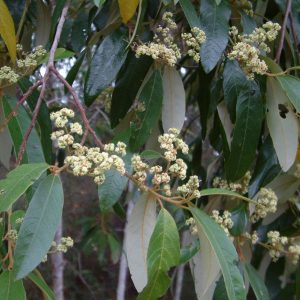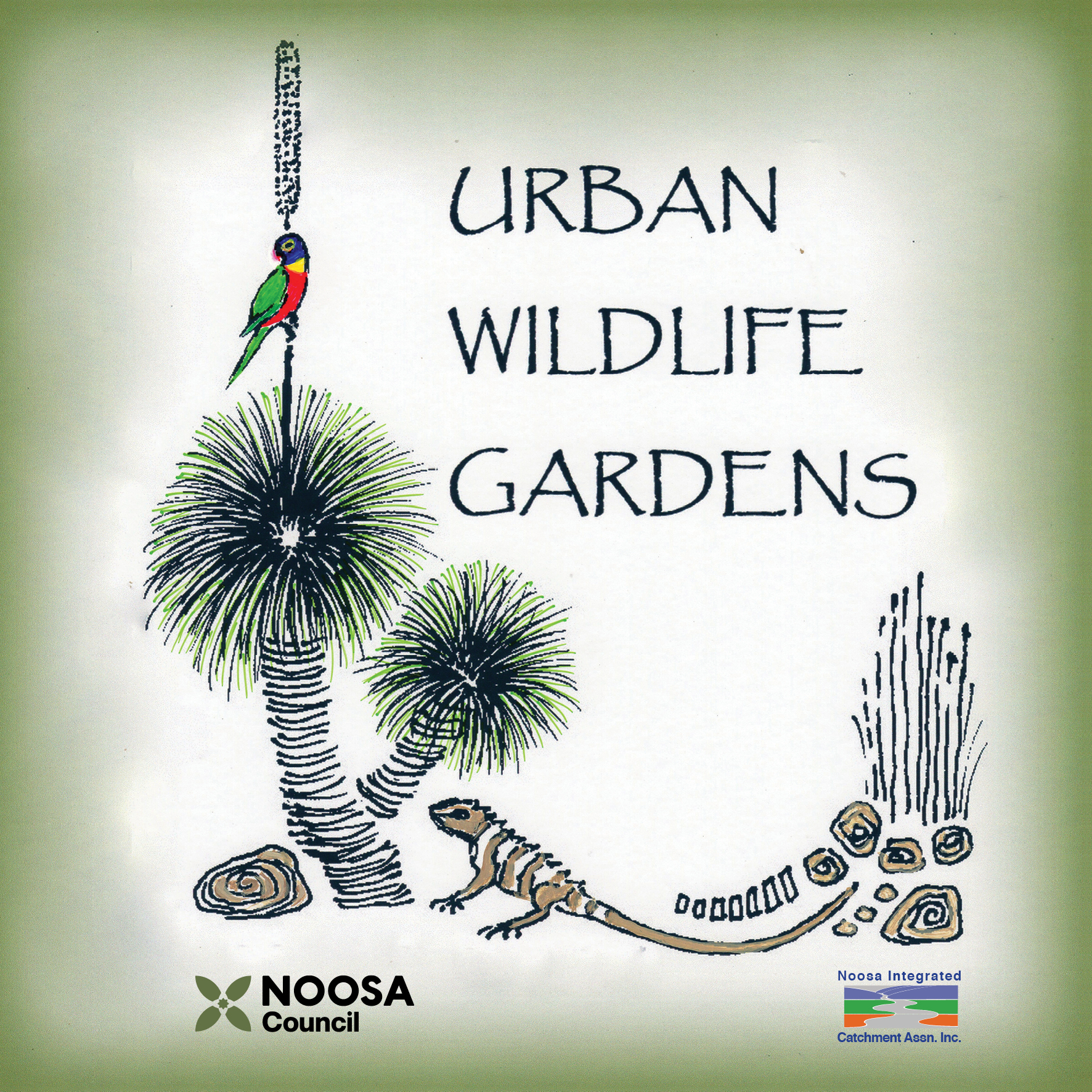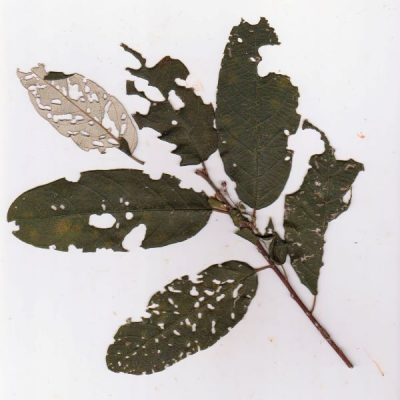Alphitonia excelsa has the local common names of Red Ash and the Soap Tree
New shoots smell of sarsaparilla when crushed.
The crushed leaves can be lathered to produce a bush soap that cleanses and disinfects skin.
The plant contains saponin and this was put to many uses. Crushed leaves and berries were used to stun fish that were trapped in small ponds. The fish to be eaten were caught and killed. The rest recovered and swam away….. very sustainable fishing!
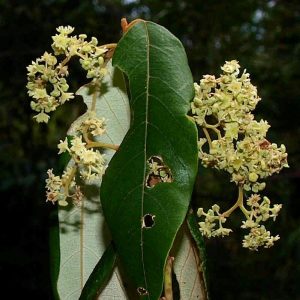
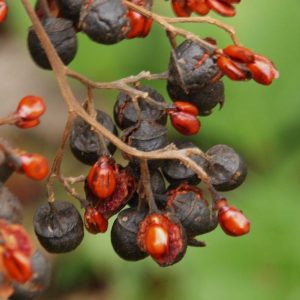
ANECDOTAL INFORMATION : Take care!
Bush medicine: Leaves were crushed in warm water to make a bath for headache patient. An infusion of the bark and root was used as a lineament or a gargle for toothache. Leaves were applied to sore eyes. A decoction of bark and wood was taken as tonic. Young shoots were chewed to relieve upset stomach.
IN YOUR GARDEN
Insects love the Soap Tree and at times you can expect some chewed leaves.
You will have seen the recent butterfly visitors flocking to this tree. New leaves regrow quickly.
This is a must have plant if you are developing an interest in all the creatures that visit your garden.
It is tough, easy and quick to grow. It can become part of a boundary shrubbery and controlled with some judicious pruning.
And the birds love it. And, of course they also love the insects that visit. This is indeed what a wildlife garden is all about.
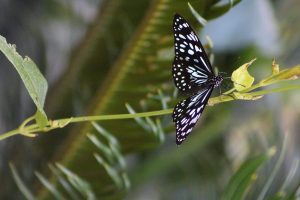
Photo by Paige Newall. Blue tiger on Monkey vine on Cycad.
OTHER USES:
Timber: Durable timber for cabinet and indoor work, also fencing and house stumps.
The fibre was used for ropes and baskets.
Useful drought fodder for stock.
The similar Alphitonia petrei (Pink Ash) also occurs locally.
